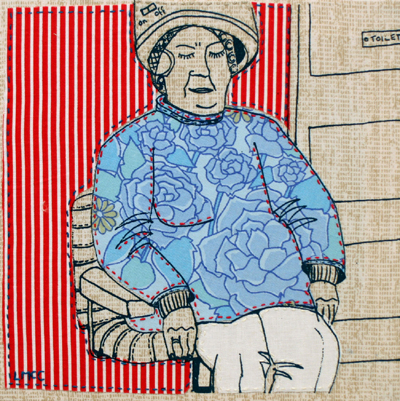Our visit to Manchester UCAS fair was an experience that has helped me see what Universities have the right courses and the right oppertunities for me. From the stalls we visited I found that Teesside, Nottingham and Lincoln Universities had the most appeal to me in what they had to offer. I'm not actually sure what I am aiming for yet career wise and I am trying to keep my options open, I think I want to go into design or illustration or even something to do with photography. I think the best thing to do would be to incorporate all of these into my work, especially the photography part. It will show that I can use all kinds of media in my work. I think that visiting the UCAS fair has made me realise that I really do want to go to University.
Tuesday, 29 November 2011
Tuesday, 8 November 2011
Researched artists
RALPH STEADMAN
He started as a cartoonist and through the years diversified into many fields of creativity. He has illustrated such classics as "Alice in Wonderland", "Treasure Island" and "Animal Farm". He embarked on a hugely successful career, drawing satirical cartoons for Punch, Private Eye, The New Statesman and the Daily Telegraph. He is also a printmaker. His prints include a series of etchings on writers from William Shakespeare to William Burroughs. Steadman is renowned for his political and social caricatures and cartoons and also for illustrating a number of picture books. In the USA he worked for Rolling Stone. Steadman has won numerous awards for his work including the V&A's Francis Williams Book Illustration Award in 1973, the Designers' & Art Directors' Association Gold Award in 1977, the American Institute of Graphic Arts Illustrator of the Year award in 1979, W. H. Smith Illustration Award in 1987, BBC Design Award in 1987, CAT Advertising Cartoonist of the Year Award in 1995, 1996, and 1998. Steadman uses pens, brushes, inks, acrylics, oils, etching, silkscreen and collage, and has also produced sculptures in iron and steel. He has an often brutal, savage style. His work isn't as defined as the others and more carefree and sketchy with less material work.
LAURA MCCAFFERTY
Laura McCafferty is a textiles artist who blends Textiles and Illustration to create snapshots of social events and environments with warmth, sensitivity and humour. Her technique of combining stitch, surface pattern, print and illustration. Laura's work has been exhibited widely nationally and internationally and featured in books and press worldwide. Recently won a 2008 Nottingham Creative Business Award for Crafts and was shortlisted for 2008 Wesley Barrell Craft Awards. An early preoccupation with the elderly in her final year of art college was the first attempt to grasp and capture something before it vanished. All the images are taken from real life personal experiences. The she visually records human interaction and converts it to art with craft based techniques. She starts an image with a pen drawing then works through different stages, screen-print and hand embroidery. Fabrics are carefully selected from vintage, recycled and new cottons. Each artwork is unique and hand made by Laura in her Nottingham workshop using traditional techniques. She found inspiration from a visit to Japan, North America, Greece and Spain; although most of the work is inspired by people closer to home. She develops a new collection each year, which is inspired directly by travels, experience and people. I am not really interested in her style of work however it is skillful. She uses many techniques that match her style of work.
PETER CLARK
Peter uses a comprehensive collection of found papers as his palette which are coloured, patterned or textured by their printed, written or worn surfaces which result in a wonderful three dimensional image. He shades with density of print and creates substance and movement with lines plucked from old maps or manuscripts. His pieces use mark-making in an innovative and humorous way to create a collection of beasts and clothing which display character and wit. His career started as an illustrator and designer of animation for television. A long time collector of ‘things' Peter travels around different markets and collects old stamps, faded maps, love letters, labels, buttons, dress making patterns, playing cards, textiles cotton webbing that binds books and paper boxes for the basis of his work. Clark's approach to paper collage is three dimensional. He first draws the outline in felt tip and then spends hours choosing from his collection of found ‘things' the right materials and colours to define the muscles, features and tonal effects which finally bring to life the finished work. Peter uses more material than actual illustrations and I much prefer his work to the other two artists, there is something unique about his work that makes it different and much more interesting. His use of layers make his work eye catching and personally, I think it makes it more appealing to look at.
Subscribe to:
Comments (Atom)


